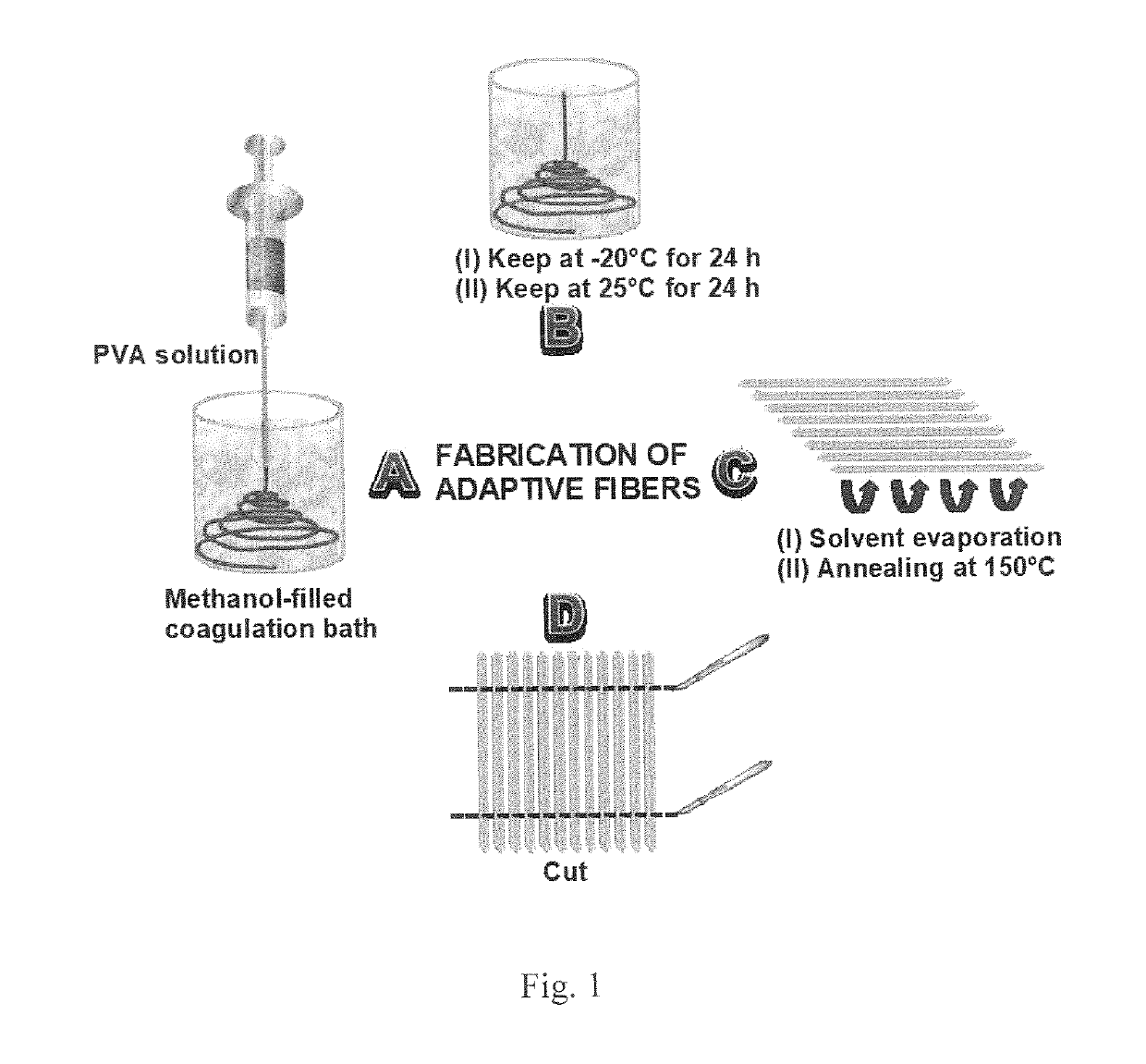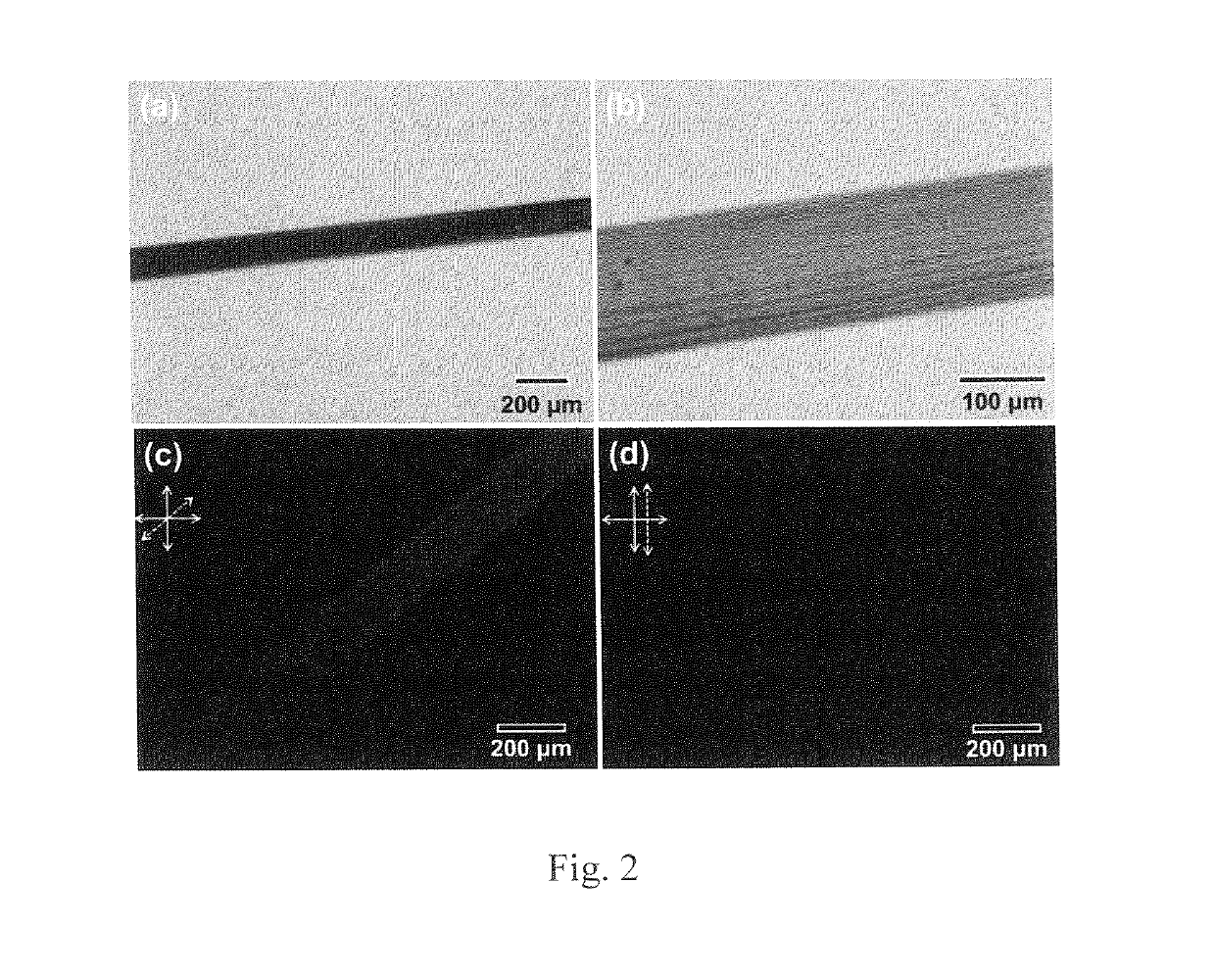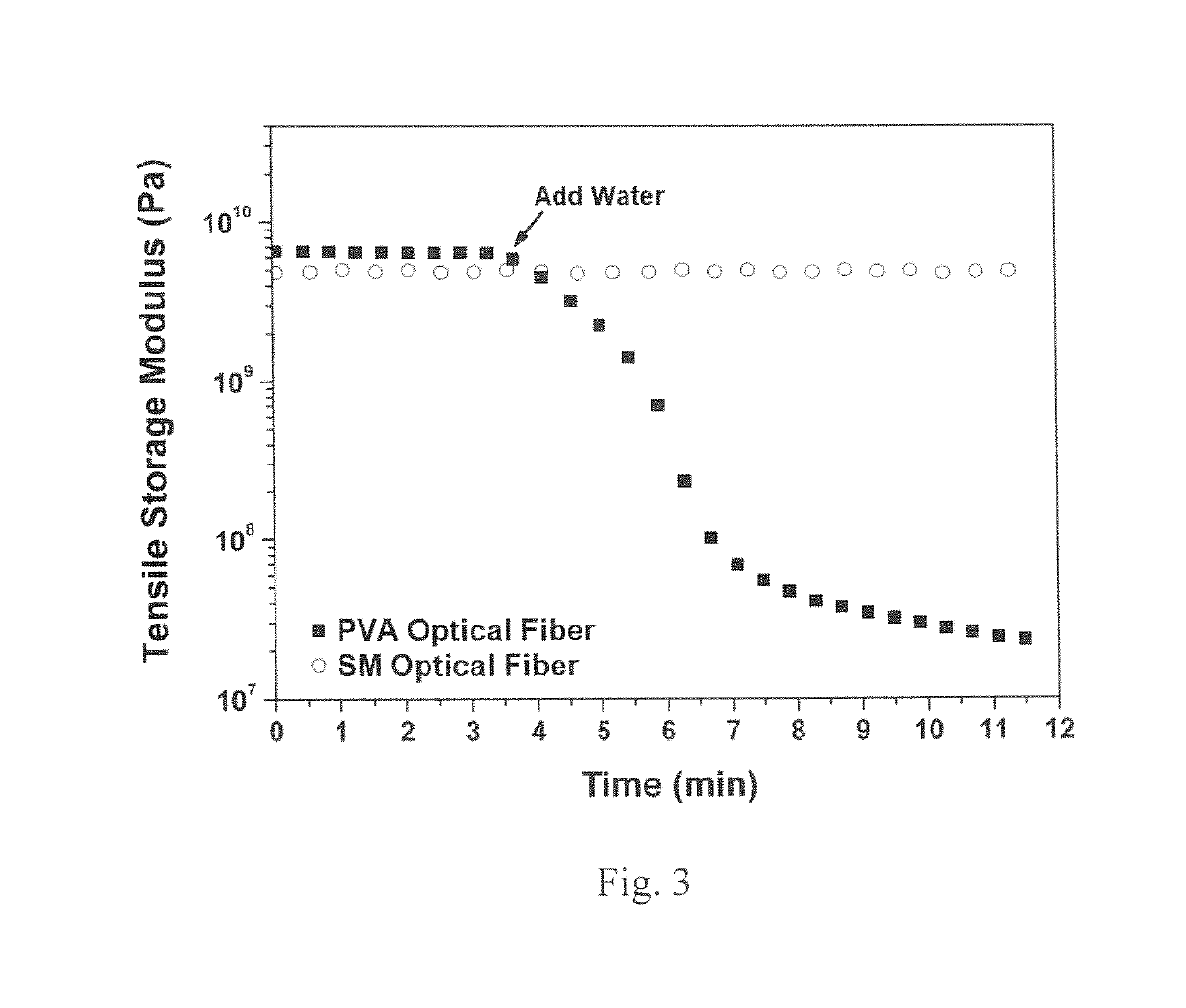Physiologically responsive mechanically adaptive polymer optical fibers, production and methods of use
a mechanically adaptive, optical fiber technology, applied in the field of physiologically responsive mechanically adaptive optical fibers, can solve the problems of difficult realization of reliable chronic interfaces, only emerging long-term in vivo studies, and insufficient basis for adaptive nanocomposites
- Summary
- Abstract
- Description
- Claims
- Application Information
AI Technical Summary
Benefits of technology
Problems solved by technology
Method used
Image
Examples
examples
[0045]The various steps of a fabrication process employed are schematically shown in FIG. 1. A wet-spinning process was used to spin a 10 mg / mL solution of PVA (99% hydrolyzed, weight-average molecular weight, Mw,=85000-124000 g / mol, Sigma Aldrich) in a 4:1 v / v DMSO / water mixture into a coagulation bath of methanol cooled to −20° C., using a spinneret with a diameter of 0.8 mm and a flow rate of 0.36 mL / min. The as-spun PVA fibers were kept immersed in the coagulation bath for 24 h at −20° C. and for another 24 h at room temperature. The methanol-swollen fibers were subsequently aligned and fixated on an aluminum sheet, dried for 24 h in an oven at 50° C., and finally heat-treated at 150° C. for 15 min. This method afforded fibers with a diameter of −150 μm, and a crystallinity of 20-30%. In recent papers that are hereby incorporated by reference, we have shown that heat-treated solution-cast PVA films exhibit a crystallinity of 30-40%. This comparison shows that the process used he...
PUM
 Login to View More
Login to View More Abstract
Description
Claims
Application Information
 Login to View More
Login to View More - R&D
- Intellectual Property
- Life Sciences
- Materials
- Tech Scout
- Unparalleled Data Quality
- Higher Quality Content
- 60% Fewer Hallucinations
Browse by: Latest US Patents, China's latest patents, Technical Efficacy Thesaurus, Application Domain, Technology Topic, Popular Technical Reports.
© 2025 PatSnap. All rights reserved.Legal|Privacy policy|Modern Slavery Act Transparency Statement|Sitemap|About US| Contact US: help@patsnap.com



